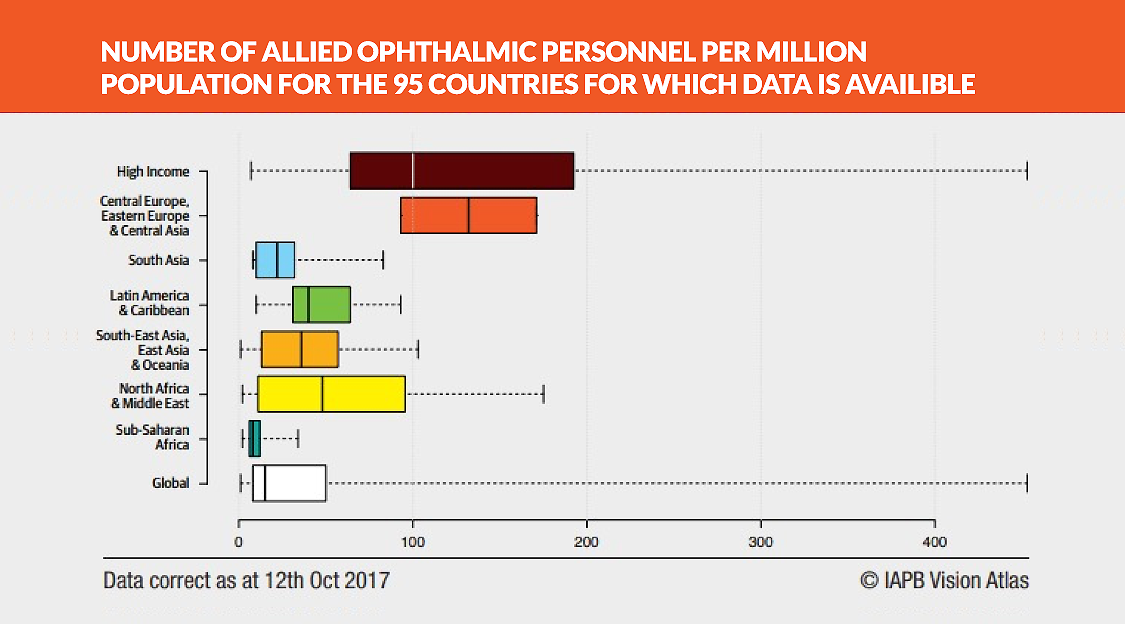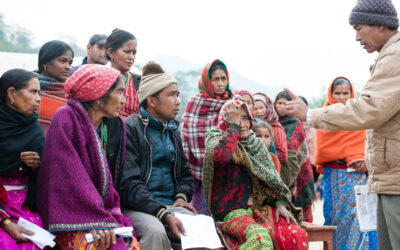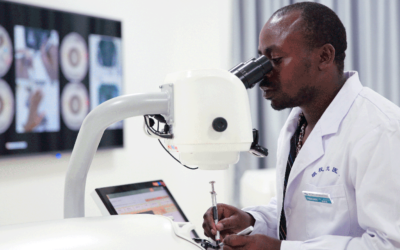HelpMeSee is placing an Eye Surgery Simulator to the Instituto Mexicano de Oftalmología (IMO) a charitable hospital in Queretaro, Mexico dedicated to providing high-quality eye care at a low cost. Please help us support IMO and other HelpMeSee training partner programs by donating here:
- The prevalence of cataract blindness in Latin America, like elsewhere, is an issue of poverty and unequal care.
- Queretaro, a state in Mexico with a strong economy, had a high cataract surgery coverage rate of 91.7% for those with cataracts that led to severe visual impairment, whereas Chiapas a poorer state in the South had a cataract surgery rate of only 69%.
- The outcomes or how well people can see after cataract surgery is another issue. Good cataract outcomes mean that fewer than 10% of cases should have a “severe visual impairment” on recovery. In some Latin American countries, this number is 23%.
- If we look at the general aging of the population, this situation in Latin America as across the world will only get worse.
- While the problem of cataract blindness may sound daunting, most experts agree on the solution: more training that focuses on increasing cataract surgery productivity while improving outcomes.
“We believe in Manual Small Incision Cataract Surgery (MSICS) and fully support the training of this technique to address the backlog of those blind due to untreated cataracts in Latin America and elsewhere. MSICS delivers excellent results. It can be performed in large numbers and is well-suited for treating the poor.”
The prevalence of cataract blindness in Latin America, like elsewhere, is an issue of poverty and unequal care. Mexico is considered a middle-income country, yet the country’s prosperity is divided. With a population of over 125 million people, half live in poverty and up to one-fifth do not have access to any healthcare. Due to this disparity, many who need ophthalmic treatment depend upon charitable hospitals like Instituto Mexicano de Oftalmologia (Mexican Institute of Opthalmology or IMO), located in Queretaro.
A study performed in 2010 in the Mexican states of Queretaro and Chiapas highlights this imbalance of care. Queretaro is one of the stronger state economies of Mexico. Chiapas in the south is poorer. Half of the population of Chiapas live on subsistence farming. Results concluded that the incidence of blindness is two and half times higher in Chiapas than in Queretaro. Likewise, Queretaro had a high cataract surgery coverage rate of 91.7% for those with cataracts that led to severe visual impairment, whereas only 69% of patients in Chiapas in the same condition receive treatment. Usually, the larger more affluent areas have an adequate number of cataract surgeons, but the less wealthy rural areas do not. This scenario plays out in other countries as demonstrated in a 2014 study that found that cataract surgery coverage varied widely. Uruguay treats 77% of their cataract cases, but El Salvador only 15%.
It’s not all bad news. In this same 2014 study, it was found that some headway had been made during the previous decade from 2004 to 2015. The Cataract Surgery Rate (CSR) defined as the number of cataract surgeries performed per year for every 1 million in population for Latin America as a whole increased from 1,562 to 2,672 representing an impressive 70% growth. The World Health Organization suggests a sustained CSR of 3,000 to 5,000 to eliminate cataract blindness. As for the total number of ophthalmologists per million people in the population, the figure for Latin America is 62. While not the worst by world standards, this is a lower but safe number.

The outcomes or how well people can see after cataract surgery is another issue. Good cataract outcomes mean that fewer than 10% of cases should have a “severe visual impairment” on recovery. In one country inferior outcomes were reported at 15% and in another 23%.
If we look at the general aging of the population, this situation will only get worse. In IMO’s home state of Queretaro, the numbers of those 50 years or older will increase by 24% from 2010 to 2030.
While the problem of cataract blindness may sound daunting, most experts agree on the solution: more training that focuses on increasing cataract surgery productivity through while improving outcomes. Additionally, a successful eye health care model that includes a comprehensive care program that encompasses a training center. To fix the problem of cataract blindness, institutions like IMO must focus on scales of economy to maintain sustainability and guarantee affordable eye care for all. This is why HelpMeSee is planning to install one of our Eye Surgery Simulators at IMO.
Surgery is the only cure for cataracts. Reducing the numbers of people who are blind or severely visually impaired will lead to healthier populations, reduce overall healthcare costs, save healthcare budgets for other essential projects and increase the economic outlooks for individuals and economies by allowing people to work.
Supporting a cataract surgery or even a few is an admirable effort, training additional cataract surgeons to address the shortages in Latin American and elsewhere across the world is a sustainable solution that can help hundreds. Using a cost-efficient and productive surgical technique like MSICS is the only impactful way to address this public health crisis.







